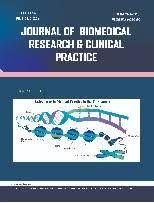Management of Intersex: A Challenge in Low Resource Settings
Keywords:
Intersex, Management, Low Resource, SettingsAbstract
Background: Intersex refers to people with congenital variations in chromosomes, gonads, sex hormones or
genitals that can neither be categorized as male or female. Features may include genital ambiguity, combinations of
chromosomal genotype, and sexual phenotypes different from XY (Male) and XX (female). The availability or
accessibility of a wide range of investigative components for managing intersex remains a major challenge for
health systems in low-resource settings. There are also missed cases that present later in life when their gender
assignment contradicts the secondary sexual developments. Depending on the gender of rearing, they present to the
gynaecologist or urologist. However proper clinical evaluation and early diagnosis of intersex can reduce the
psychological trauma that the patient and their families go through. We present two patients who presented to the
gynaecologic clinic of ABUTH within a period of 2 years. Conclusion: Early diagnosis and management of
intersex remains a major challenge for health systems in low-resource settings like ours. However proper clinical
evaluation can make early detection possible and also help in its diagnosis.





